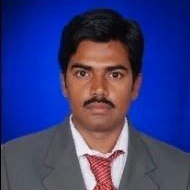International Journal of Image, Graphics and Signal Processing (IJIGSP)
IJIGSP Vol. 5, No. 12, 8 Oct. 2013
Cover page and Table of Contents: PDF (size: 283KB)
Adaptive Signal Processing for Improvement of Convergence Characteristics of FIR Filter
Full Text (PDF, 283KB), PP.18-25
Views: 0 Downloads: 0
Author(s)
Index Terms
Adaptive filtering, Performance, MMax NLMS algorithm, Variable step-size, Convergence chrcteristics
Abstract
When the length of the filter and consequently the number of filter coefficients increase, the design of the filter becomes complex and therefore the popular NLMS algorithm has been replaced with MMax NLMS algorithm. But its performance in terms of convergence characteristics reduces to an extent though the filter design becomes very easy i.e., convergence occurs at a later stage taking too much computational time for the processing of the signal. In this paper, a proposal for improving the convergence characteristics is made without compromising the performance of the design and affecting the tap-selection process of the MMax NLMS algorithm. With the introduction of the concept of variable step-size for the filter coefficients, loss in the performance due to MMax NLMS algorithm can be effectively lowered and the convergence is better achieved in the filter deign.
Cite This Paper
USN Rao, B Raja Ramesh,"Adaptive Signal Processing for Improvement of Convergence Characteristics of FIR Filter", IJIGSP, vol.5, no.12, pp.18-25, 2013. DOI: 10.5815/ijigsp.2013.12.03
Reference
[1]T. Aboulnasr and K. Mayyas, “Complexity reduction of the NLMS algorithm via selective coefficient update,” IEEE Trans. Signal Processing, vol. 47, pp. 1421–1424, May 1999.
[2]D. L. Duttweiler, “Proportionate normalized least-mean-squares adaptation in echo cancellers,” IEEE Trans. Speech Audio Processing, vol. 8, pp. 508–518, Sept. 2000.
[3]S. L. Gay, “An efficient, fast converging adaptive filter for network echo cancellation,” in Proc. Asilomar Conf., Nov. 1998.
[4]T. Gänsler, J. Benesty,M.M. Sondhi, and S. L. Gay, “Dynamic resource allocation for network echo cancellation,” in Proc. ICASSP, May 2001, pp. 3233–3236.
[5]P. C. Yip and D. M. Etter, “An adaptive multiple echo canceller for slowly time-varying echo paths,” IEEE Trans. Commun., vol. 38, pp. 1693–1698, AUTHOR: IN WHAT MONTHWAS THIS PUBLISHED 1990.
[6]Y.-F. Cheng and D. M. Etter, “Analysis of an adaptive technique for modeling sparse systems,” IEEE Trans. Acoust., Speech Signal Processing, vol. 37, pp. 254–264, Feb 1989
[7]J. Homer, L. M. Y. Mareels, R. R. Bitmead, B. Wahlberg, and F. Gustafsson, “LMS estimation via structural detection,” IEEE Trans. Signal Processing, vol. 46, pp. 2651–2663, Oct. 1998.
[8]J. Homer, “Detection guided NLMS estimation of sparsely parameterized channels,” IEEE Trans. Circuit Syst. II, vol. 47, pp. 1437–1442, Dec. 2000.
[9]A. Gilloire and M. Vetterli, "Adaptive Filtekg in Subbands with Critical Sampling: Analysis, Enpeiments, and Application to Acoustic Echo Cancellation". IEEE Trans. Signal Processing, Vol. 40, No. 8, Aug. 1992.
[10]S. S. Pradhan and V. U. Reddy, "A New Approach to Sub band Adaptive Filtering" BEE Trans. Signal Processing, Vol. 47, No. 3, Mar.1999
[11]M. R. Petraglia, R. G. Alves and P. S. R. Diniz, "New Structures for Adaptive Filteing in Subbands with Critical Sampling". IEEE Trans. Signal Pmcessing, Vol. 48, NO. 12, Dec. 2000.
[12]D. Messerschmitt et al., Digital Voice Echo Canceler with TMS32020, Digital Signal Processing Applications with the TMS3C20 Family, Texas Instrum., Inc. Dallas, TX, 1986.
[13]S. M. Kuo and J. Chen, “Multiple microphone acoustic echo cancellation system with the partial adaptive process,” Digital Signal Process. vol. 3, pp. 54–63, 1993
[14]S. C. Douglas, “Adaptive filters employing partial updates,” IEEE Trans. Circuits Syst. II, vol. 44, pp. 209–216, Mar. 1997.
[15]S. Douglas, "Adaptive Filters Employing Partial Update," IEEE Trans. Circuits Syst. II, Analog Digit. Signal Process, vol. 44, no.3, pp. 209-216, Mar. 1997.
[16]T. Aboulnasr and K. Mayyas, "Complexity Reduction of the NLMS algorithm via Selective coefficient Update," IEEE Trans Signal Process., vol. 47, no. 5, pp. 1421-1424, May 1999.
[17]K. Dogancay and O. Tanrikulu, "Adaptive Filtering Algorithms with Selective Partial Updates," IEEE Trans. Circuits Syst. II, Analog Digit Signal Process, vol. 48, no. 8, pp. 762-769, Aug. 2001.
[18]H. Deng and M. Doroslovacki, "New Sparse Adaptive Algorithms using partial update," in Proc. IEEE Int. Conf Acoust., Speech, Signal Process., May 2004, vol. 2 pp. 845-848.
[19]J. Wu and M. Doroslovacki, "Coefficient and Input Combined Selective Partial Update NLMS for Network Echo Cancellation," Technical Report, Dept. of Electrical and Computer Engineering, The George Washington University, July 2006.
[20]C.F.N.Cowan and P.M.Grant, Adaptive Filters, (Prentice Hall, Englewood Cliffs, 1985).
[21]B.Widrow and S.D.Stearns, Adaptive Signal Processing, (Prentice Hall, Englewood Cliffs, NJ, 1988).
[22]J. A. Chambers, O. Tanrikulu, and A. G. Constantinides, Lease mean mixed-norm adaptive filtering, IEE Electronic Letters, Vol. 30, No. 9, 1994.
[23]O. Tanrikulu and J. A. Chambers, Convergence and steady-state properties of the lease-mean mixed-norm (LMMN) adaptive algorithm, IEE proceedings on Vision, Image and Signal Processing, Vol. 143, No. 3, 137-142, 1996.
[24]B. Widrow, “Thinking about thinking: the discovery of the LMS algorithm,” IEEE Signal Processing Mag., vol. 22, no. 1, pp. 100–106, Jan.2005.
[25]S. Haykin, Adaptive Filter Theory, 4th ed., ser. Information and System Science, Prentice Hall, 2002.
[26]E. H¨ansler, “Hands-free telephones- joint control of echo cancellation and post filtering,” Signal Processing, vol. 80, no. 11, pp. 2295–2305, Nov. 2000.
[27]T. Aboulnasr and K. Mayyas, “Selective coefficient update of gradient based adaptive algorithms,” in Proc. IEEE Int. Conf. Acoustics Speech Signal Processing, vol. 3, 1997, pp. 1929–1932.
[28]“MSE analysis of the M-Max NLMS adaptive algorithm,” in Proc. IEEE Int. Conf. Acoustics Speech Signal Processing, vol. 3, 1998, pp. 1669–1672.
[29]A.W. H. Khong and P. A. Naylor, “Selective-tap adaptive filtering with performance analysis for identification of time-varying systems,” IEEE Trans. Audio Speech Language Processing, vol. 15, no. 5, pp. 1681 – 1695, Jul. 2007.
[30]Pitas, “Fast algorithms for running ordering and max/min calculation,” IEEE Trans. Circuits Syst., vol. 36, no. 6, pp. 795–804, Jun. 1989.
[31]H.-C. Shin, A. Sayed, and W.-J. Song, “Variable step-size NLMS and affine projection algorithms,” IEEE Signal Processing Lett., vol. 11,no. 2, pp. 132–135, Feb. 2004.
[32]Khong A.W.H, Woon-SengGan, Naylor, P.A., and Mike Brookes, M. “A Low Complexity Fast Converging Partial Update Adaptive Algorithm Employing Variable Step-size For Acoustic Echo Cancellation”, IEEE International Conference on Acoustic, speech and signal processing, 2008 pp. 237-240, May 2008.

